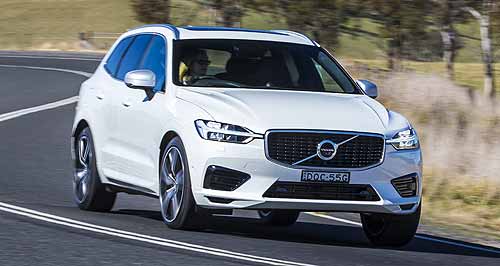Make / Model Search
News - Market Insight - Market Insight 2021Market Insight: Volvo’s rise and rise in AustraliaHelping hand: The XC40 (left) and XC60 (below) have played a big role in Volvo’s market share increase. Focus on product and customer service provides incremental growth for classy SwedeGallery Click to see larger images 15 Feb 2021 By NEIL DOWLING TWENTY years ago a question was asked among some motoring writers and industry observers about which franchises would be the best for future growth. The most common answers were Jaguar Land Rover and Volvo.
Well look what happened. Volvo in January this year had a 45.2 per cent growth over the same month in 2020, has sales of a solid 800-plus units a month, and a market share of 1.0 per cent. In 2020 it sold 7700 cars.
By comparison, in 2010, it had a market share of 0.5 per cent and sold 4945 units in the year. This was the era before it started to embrace a new design language and adopt the latest in-car technology.
In the past decade, it has literally been an exercise in building customers based on product and improving buyer relationships.
Milestones included expanding the model range early in 2010, to launching the all-new XC40 SUV (in Australia in March 2018) and then the new-generation XC60 SUV, and the revised XC90 in 2018.
In 2019 the (then) managing director of Volvo Cars Australia Nick Connor introduced a new service menu that cut three-year service costs for owners by $1200 to a starting point of $1595.
In 2020 the warranty was extended to five years from three years and the price of the XC90 – expected to be replaced in 2022 – was slashed by up to $15,000.
This rise in sales was put to current VCA managing director Stephen Connor (no relation to his predecessor Nick) who was previously chief operating officer with the company and, prior to that, had experience in sales with OEMs including Kia and in retail with a dealership group.
He said Volvo “deserved recognition and success” so VCA had a clear strategy that focused on and addressed every facet of the business.
“We put together an operational plan to address what we considered as under-achievement across our business here in Australia,” he said.
“This strategy focused on the dealer network, looking at network profitability, product simplification, internal training and dealer competence plus a particular focus on our core SUV product.
“The final element was a single determination from the business and employees to ensure Volvo Car Australia played a part, and was accountable for, the growth of a brand that had languished for years.
“Our operational plan was simple; growth, profitability and customer retention.”
Mr Connor said that the dealer network now mirrors Volvo’s “beautifully-designed product”.
“Our one point of difference is our heritage and our Scandinavian look and feel,” he said.
“Our product is beautifully designed inside and out. It truly speaks of and delivers our brand values. Our marketing tells the story of who we are.
“To that our we are a brand and product with a purpose. Product is always important, however we need the marketing to match our product.
“With less budget to spend than our premium competitors it is really important that we behave in a way that portrays us bigger than we really are. By this we need to maximise all opportunities, from the now world publicised and recognised Living Seawall to local media activities via our press fleet and the like.”
Mr Connor said Volvo now had a product that was second to none and that customer satisfaction was paramount to success.
“Together with our dealer network, Volvo Cars continues to make customer satisfaction our number one priority,” he said.
“Our core values of safety, quality and environmental care have not changed since our inception in 1927 and these are seemingly resonating more with every Australian.
“It almost feels that the consumers are now gravitating to us.”
The Volvo range now comprises six models – three SUVs (XC40, XC60 and XC90), one sedan (S60) and two wagons (V60 and V90CC) – compared with 12 five years ago. In 2016 Volvo sold three sedans (S60, S80 and S90) in Australia, along with the V40 wagon and V40 CC, and a V60 CC version of the V60 wagon.
Mr Connor said the brand is now poised to launch new models – starting next month – and said it is totally committed to electrification.
“Our current offer of the plug-in vehicles (PHEV) has seen significant demand and is also seen as the bridge between internal-combustion and EV propulsions,” he said.
“We currently represent 24 per cent of the PHEV sales in the premium sector with Mercedes-Benz delivering 27 per cent – that in itself highlights the quality of our product and the direction of electrification.
“The imminent arrival of our pure EV range will solidify our leadership and offer a new mobility for the future generations but it is our mild-hybrid vehicles that will underpin and educate the current Australian buying public of the benefits of electrification.
“We are only trying to appeal to two per cent of the market and we believe we can lead the charge of electrification by being the only manufacturer to have a full model line-up consisting of mild hybrid, PHEV and battery EVs by July 2021.
“All of those combinations support our drive toward continued growth in Australia.”  Read more |
Click to shareMarket Insight articlesResearch Market Insight Motor industry news |













Facebook Twitter Instagram